Montana Vegetable Planting
Welcome to the Montana Vegetable Planting Guide, your essential resource for navigating the state’s gardening climate. This guide provides crucial frost and freeze date information for various Montana cities, along with Montana’s USDA Plant Hardiness Zones and tailored planting calendars. Designed to assist gardeners of all skill levels, this guide is your tool for cultivating a bountiful and thriving garden in Montana’s distinct environmental landscape.
First and Last Frost Dates
- Frost: When temperatures are less than or equal to 36°F (2°C) but above 32°F (0°C)
- Freeze: Below 32°F (0°C) but above 29°F (-1.7°C)
- Hard Freeze: 28°F (-2°C) or less
| City/Area | First Frost Date (Average) | Last Frost Date (Average) | First Freeze Date (Average) | Last Freeze Date (Average) |
|---|---|---|---|---|
| Kalispell | Aug-11 | Jun-14 | Sep-07 | May-27 |
| Missoula | Sep-09 | Jun-05 | Sep-26 | May-12 |
| Deer Lodge | Jul-17 | Jun-24 | Aug-19 | Jun-20 |
| Great Falls | Sep-07 | Jun-04 | Sep-21 | May-19 |
| Havre | Sep-09 | May-29 | Sep-23 | May-17 |
| Helena | Sep-18 | May-22 | Oct-01 | May-10 |
| Glasgow | Sep-18 | May-21 | Sep-27 | May-11 |
| Billings | Sep-29 | May-18 | Oct-08 | May-07 |
Montana Planting Zones and Planting Calendars
Montana USDA Plant Hardiness Zones include 3a, 3b, 4a, 4b, 5a, 5b, 6a, and 6b. Use the following map and calendar/schedules to effectively plan when to start, transplant, and harvest your vegetables in the State of Montana.
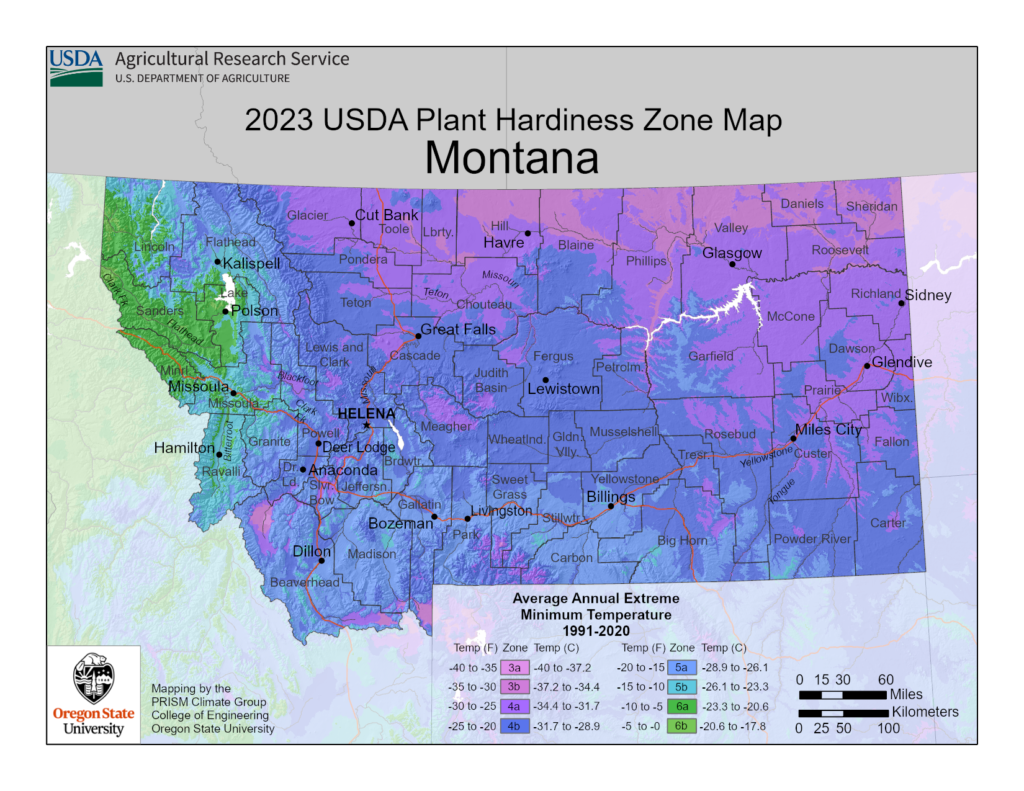
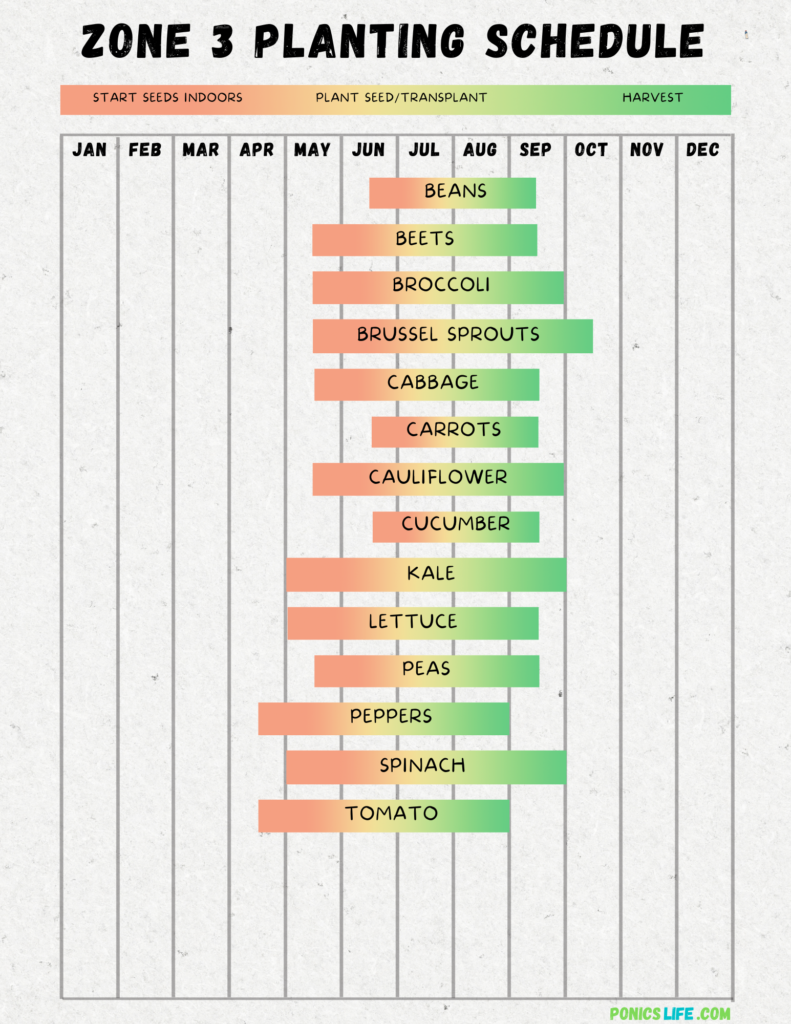
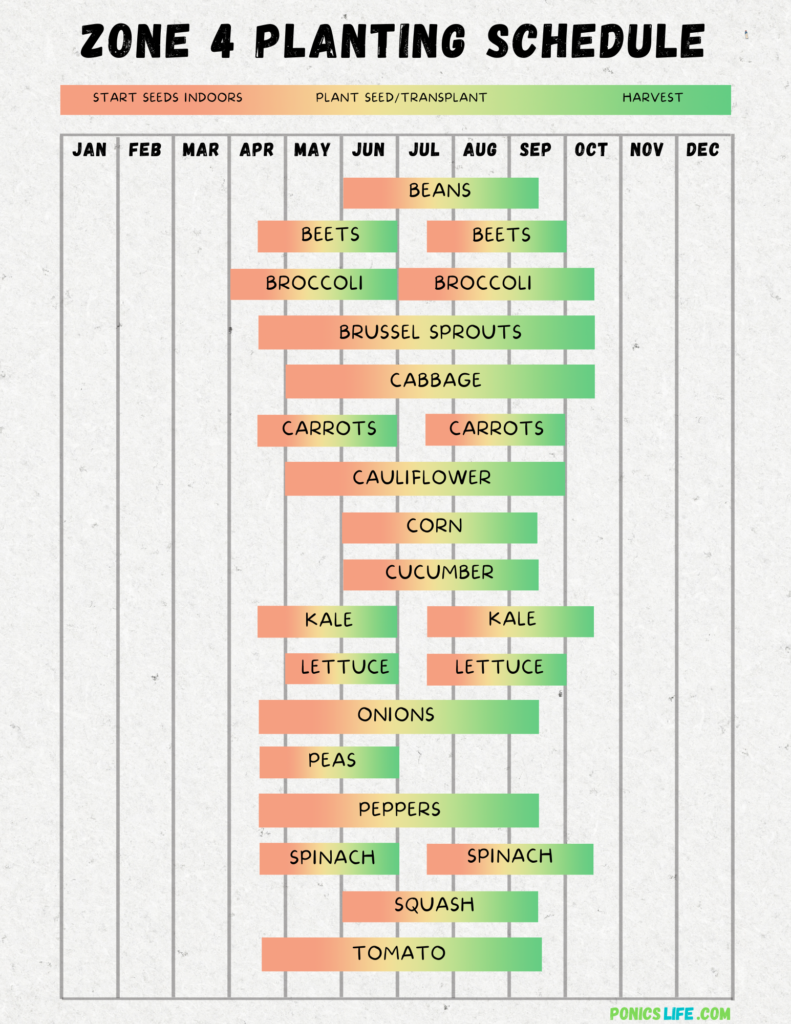
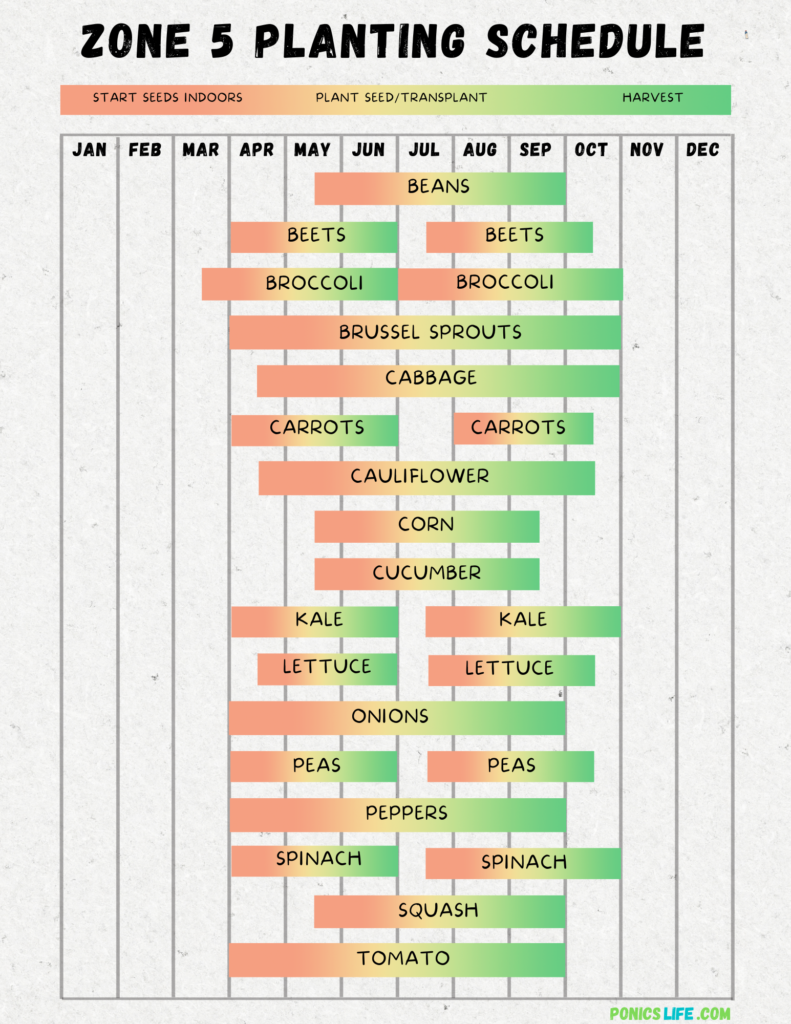
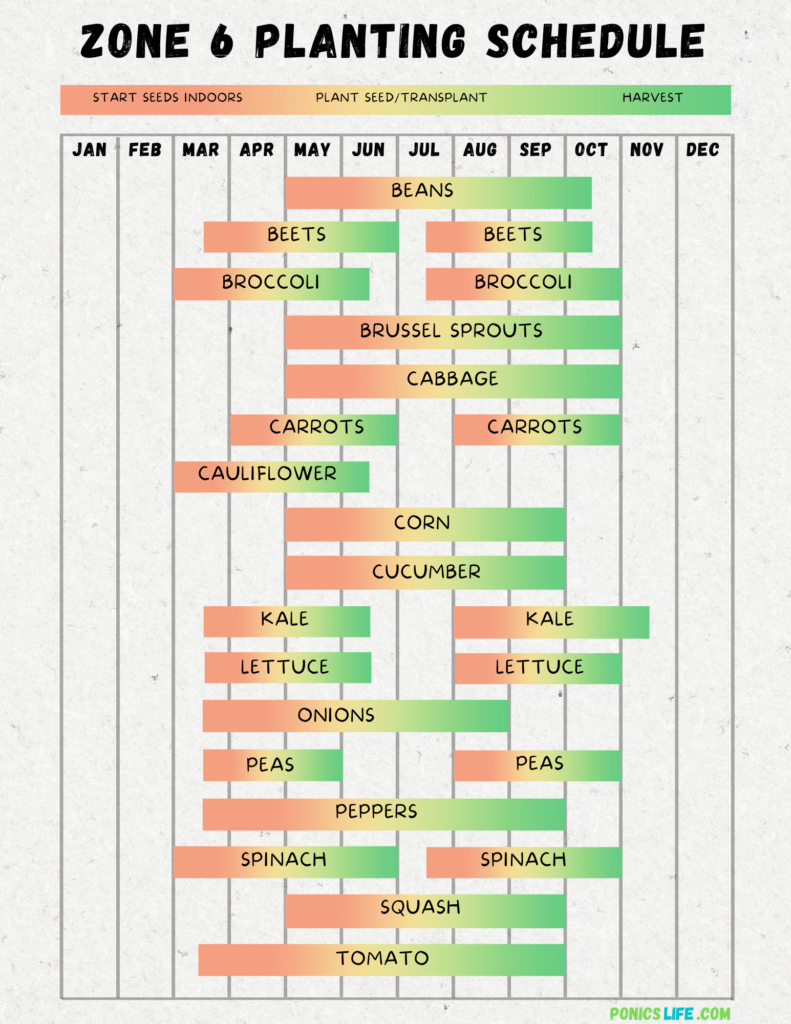
Important Note: The above schedules are flexible guides, not strict rules. Aim for a general timeline for starting, transplanting, and harvesting your vegetables, considering local weather and individual plant needs.
Your Local Extension Office
For the best available information in your area, contact your local extension office. These offices are a valuable resource for gardeners of all levels, offering a wealth of region-specific information and expert guidance. Operated by universities, extension offices are staffed by knowledgeable agents who provide science-based advice on a wide range of topics, including soil health, pest control, and planting strategies that are tailored to Montana’s unique climate and conditions. They often offer workshops, planting guides, and even soil testing services to help gardeners ensure a successful and productive growing season. Contact the Montana State University Extension to learn more.
FAQs
Where does the information from the table come from?
The “first/last freeze” information comes from weather.gov. More specifically, we looked at NWS Weather Forecast Offices in the state and then examined local area “mean” temperatures. We looked at seasonal year ranges (period beginning on July 1st) from 1999-2000 to 2022-2023.
Do planting zones also apply to Hydroponics?
Yes, planting zones apply to hydroponics if you’re growing outdoors because these zones reflect the local climate and environmental conditions, such as temperature extremes, frost dates, and sunlight hours, all of which can significantly affect the growth and health of your plants, even in a hydroponic system.
Do gardening and weather sources share the same definition for ‘first freeze,’ ‘last freeze,’ ‘first frost,’ and ‘last frost’?
No, not all resources use the same definition for first/last freeze and frost. Definitions can vary between different meteorological organizations, gardening resources, and regional guidelines. Some may define these events based on specific temperature thresholds, while others might consider the duration of certain temperatures or additional climatic factors. It’s important for gardeners and researchers to refer to the specific criteria used in their chosen resources and to consult local data when planning activities dependent on these definitions. Understanding the source and context of these definitions is key to accurate and effective planning.
What other resources would be helpful?
There are several other resources that would be helpful. Try reading our Vegetable Days to Maturity Guide, our Seed Depth and Spacing Chart/Guide, our Hours of Sunlight Needed Guide/Chart, and our Vegetable Container Size Guide.


